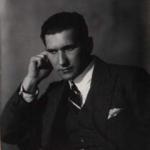
The performance of the ballet Romeo and Juliet on 23 June will be dedicated to the ballet’s creator, the choreographer Leonid Mikhailovich Lavrovsky.
The creative path of Leonid Lavrovsky began in the city on the River Neva. In Petrograd he learnt the basics of the profession when he studied at the Theatre School, danced in productions of the Kirov Theatre and appeared in ballets of his fellow classmate Georgy Balanchivadze (whose plot-less works he later sharply criticised for their lack of efficacy). In Leningrad in the 1920s and 30s he created his own first ballets – for the school and for the Maly Opera – and he sought to find in them resolutions to the most serious dramatic conflicts through dance. In Leningrad in 1940 he created his great masterpiece – Romeo and Juliet, introducing the immodest thought-up surname of Lavrovsky (by birth he was simply Ivanov) to the history of world ballet. Created together with stage director Sergei Radlov and the designer Pyotr Williams to Prokofiev’s dazzling music, the ballet proved to be the aesthetic “order of the day”. Much of the literature in the ballet, represented in the spirit of Shakespearean-era masterpieces from the Hermitage, the social conflict, the struggle of the new young lovers of the Renaissance age with the obscurantism of the medieval past and dance that was subjected to the drama – all of this fully matched the artistic endeavours of the age. Lavrovsky intensified the dance with reality and justified the dance scenes from the position of the literary development of the plot in other productions too, which he produced afterwards when he was Principal Ballet Master of the Bolshoi Theatre in Moscow. But it was in Romeo and Juliet that we find the ideal blend of an intoxicating sense of the age, an emotional unity of dance and music as well as theatricality. Created in exact accordance with the text of Shakespeare, this ballet-play posed the dancers serious tasks as actors, and it was due to it that the world owes a debt of gratitude for the birth of the miracle that was Galina Ulanova as Juliet. Lavrovsky believed in the right of performers to co-create and zealously defended the need for drama in ballet. And it was not by chance that, after leaving a performance of his Romeo distraught, he wrote “If there is no good performer there is no ballet.” For Lavrovsky, ballet was – first and foremost – theatre personified. And history has preserved the choreographer’s name as the creator of a production that embodies the finest traditions of Soviet drama-ballet. But the time of the drama-ballet passed, and most of Lavrovsky’s works have vanished from the stage, although his Romeo and Juliet in St Petersburg and at the theatre where it was first staged even today remains for dancers a supreme school of expressiveness and acting skills. And dozens of theatres throughout the world have other dance versions of Shakespeare’s tragedy inspired by Leonid Lavrovsky’s production.
Olga Makarova